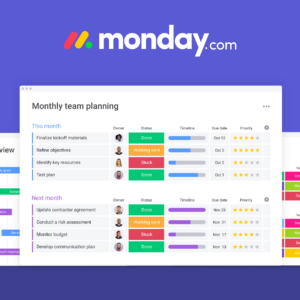There’s no doubt about it – the primary asset of most service-based businesses is their knowledge. That knowledge or “secret sauce” can be captured, financially leveraged and legalized through intellectual property protection.
But how does this apply to small businesses, especially micro-enterprises?
Many small businesses (especially service-based companies) often overlook the value of their intellectual property. Documentation of proprietary information in the form of a business process makes an otherwise intangible asset more tangible and therefore easier to assign a value to. This is an important equity-building tool that describes how your company operates with a level of detail and precision that allows staff to work without your daily presence.
There are some processes, regardless of industry, that every small business owner should consider documenting for his/her company.
Description of Each Process
As you embark upon documenting your company’s processes and procedures, consider including the following:
#1. Lead/Demand Generation Process
Describes the steps for generating qualified leads for your company based on the target market/audience.
#2. Sales/Promotion Process
Describes the various techniques for promoting your company’s products/services to maximize sales conversion.
#3. Client Relationship Management Process
Describes the steps for cultivating relationships with current and past clients to ensure a positive online and offline reputation.
#4. ROI Measuring & Monitoring
Describes the steps for measuring the return on investment for each promotional technique used to generate leads.
#5. Service Delivery Process
Describes the steps for delivering your product or service to customers.
#6. Client Satisfaction Process
Describes the steps for ensuring client satisfaction when product/service defects, pricing errors and complaints are reported.
#7. Records Management Process
Describes the procedures for creating, naming, storing, archiving and purging paper records throughout all departments of your company. Read more here.
#8. Workspace Setup & Maintenance Process
Describes the steps for the upkeep and maintenance of your physical workspace.
#9. Inventory Management Process
Describes the steps for receiving, storing and tracking physical inventory in your company.
#10. Accounts Receivable/Billing Process
Describes the steps for ensuring timely collection and depositing of money received from customers.
#11. Accounts Payable Process
Describes the steps for timely payment of invoices/bills to your company’s suppliers, vendors and creditors on time.
#12. Collections Process
Describes the legal steps to take when monies are not received on time from customers.
#13. Account Reconciliation Process
Describes the steps for monthly reconciliation of your company’s checking, savings, money market and other financial accounts.
#14. Tax Filing Process
Describes the legal steps for organizing, gathering and submitting the information necessary to file your company’s federal and state tax returns on time.
#15. Recruiting, Interviewing & Hiring Process
Describes the steps to recruit, interview and hire interns, employees, independent contractors and consultants to work for or with your company.
#16. New Hire Orientation Process
Describes the steps for onboarding each new intern, employee and independent contractor that will perform work on behalf of your company.
#17. Payroll Process
Describes the steps for setting up and distributing payment to your company’s interns, employees and independent contractors.
#18. Performance Evaluation Process
Describes the methods for observing, enhancing and discussing the work performance of your company’s interns, employees and independent contractors.
#19. Termination Process
Describes the steps for legally terminating an intern, employee and independent contractor that works for your company.
#20. Continuous Education Process
Describes the criteria for determining how to enhance employee performance through continuous and advanced education and certification courses.
#21. Contract Development & Review Process
Describes the steps for creating and reviewing contractual agreements with Vendors, Suppliers, Customers, Consultants, etc. for purposes of maintaining operational integrity.
#22. License/Certification Renewal Process
Describes the steps for securing and maintaining the licenses and certifications necessary to legally operate your company.
#23. Internal and External Auditing Process
Describes the legal steps for preparing and providing the data necessary to conduct audits of your company.
#24. Insurance Selection & Maintenance Process
Describes the criteria for selecting and maintaining the various types of insurance that provide maximum coverage and protection of your company and its representatives.
#25. Intellectual Property Maintenance Process
Describes the steps for securing and maintaining your company’s intellectual property rights. Read more here.
#26. Equipment Selection & Maintenance
Describes the methods for selecting and maintaining the technological equipment necessary to facilitate daily operations in your company.
#27. Software Selection & Maintenance
Describes the methods for selecting and upgrading the software and web-based applications necessary for automating and streamlining daily operations in your company.
#28. Disaster Recovery
Describes the steps to take to minimize downtime and recover electronic data following catastrophic events such as theft, fire and flood.
#29. Electronic Data Storage & Backup
Describes the methods for evaluating, setting up and verifying secure electronic data storage and backup.











